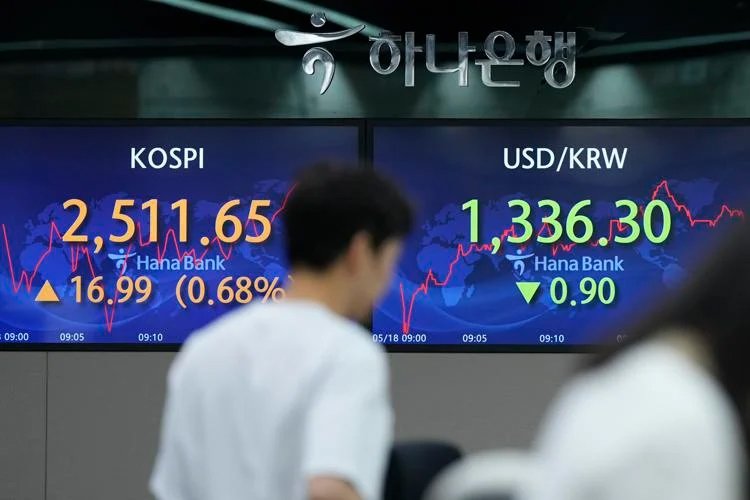TOKYO, June 9 (AP): Asian shares mostly rose Friday, led by a jump on the Tokyo Stock Exchange where share prices got a boost of optimism from a new bull market on Wall Street.
Japan’s benchmark Nikkei 225 surged 1.8 per cent to 32,224.68. Australia’s S and P/ASX 200 gained 0.4 per cent to 7,126.70. South Korea’s Kospi added 1.1 per cent to 2,638.74. Hong Kong’s Hang Seng advanced 0.8 per cent to 19,453.11.
The Shanghai Composite rose 0.4 per cent to 3,225.07.
On Wall Street, the Sand P 500 rose 0.6 per cent to carry it 20per cent above the bottom it hit in October.
That means Wall Street’s main measure of health has climbed out of a painful bear market, which saw it drop 25.4 per cent over roughly nine months.
The arrival of a bull market also doesn’t mean the stock market has made it back to its prior heights. A 25 per cent drop for the S and P 500 requires a 33 per cent rally just to get back to even.
In Thursday’s trading, the S and P 500 rose 26.41 points to 4,293.93. The Dow gained 0.5 per cent to 33,833.61, and the Nasdaq rose 1per cent to 13,238.52.
Declaring the end of a bear market may seem arbitrary, and different market watchers use different definitions, but it offers a useful marker for investors. It also provides a reminder that investors who can hold on through downturns nearly always eventually have made back all their losses in S and P 500 index funds.
Even though it was driven by so many extremes — the worst inflation in generations and the fastest hikes to interest rates in decades, for example— this most recent bear market lasted only about nine months.
It stretched from January 3, 2022, when the S and P 500 set a record, until Oct. 12, when it hit bottom. That’s shorter than the typical bear market, and it also resulted in a shallower loss than average, according to data from S and P Dow Jones Indices.
Last year was more painful for investors since both stocks and bonds lost money, he said, something that hasn’t happened in decades.
A good chunk of this bull market’s gains has been because the economy has refused to fall into a recession despite repeated predictions for one.
It’s withstood the highest interest rates since 2007, three high-profile collapses of US banks since March, another threat by the US government of an economy-shaking default on its debt and a series of other challenges.
The economy has avoided a recession so far because of a remarkably solid job market and spending by consumers. Hopes also are rising that the Fed may soon stop hiking interest rates.
The broad expectation among traders is that the Fed will hold rates steady next week, which would mark the first meeting where it hasn’t raised rates in more than a year.
While it may hike rates one more time in July, the hope on Wall Street is that it won’t go beyond that. Inflation has been coming down from its peak last summer.
Challenges remain. A report this week showed the highest number of US workers applied for unemployment benefits last week since October 2021.
After the unemployment data hit the market, Treasury yields gave up gains from earlier in the morning. The yield on the 10-year Treasury fell to 3.71 per cent from 3.78 per cent late on Wednesday.
The two-year yield, which moves more on expectations for the Fed, fell to 4.53 per cent from 4.55 per cent.
In energy trading, benchmark US crude fell 53 cents to USD 70.76 a barrel in electronic trading on the New York Mercantile Exchange. It shed USD1.24 to USDUSD71.29 a barrel on Thursday.
Brent crude, the international standard, dipped 54 cents to USD75.42 a barrel.
In currency trading, the US dollar edged up to 139.36 Japanese yen from 138.90 yen. The euro stood unchanged at USD1.0783.












